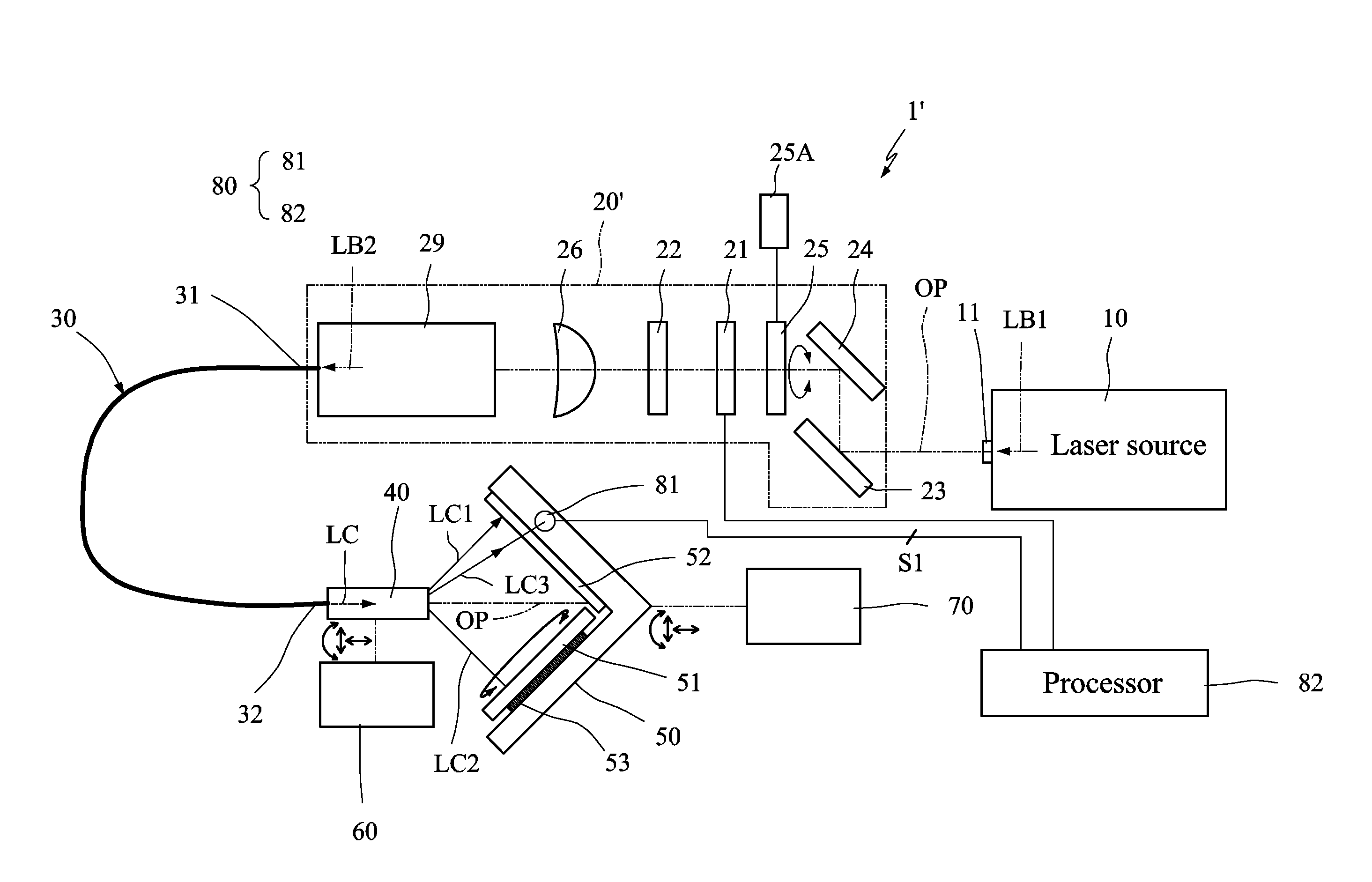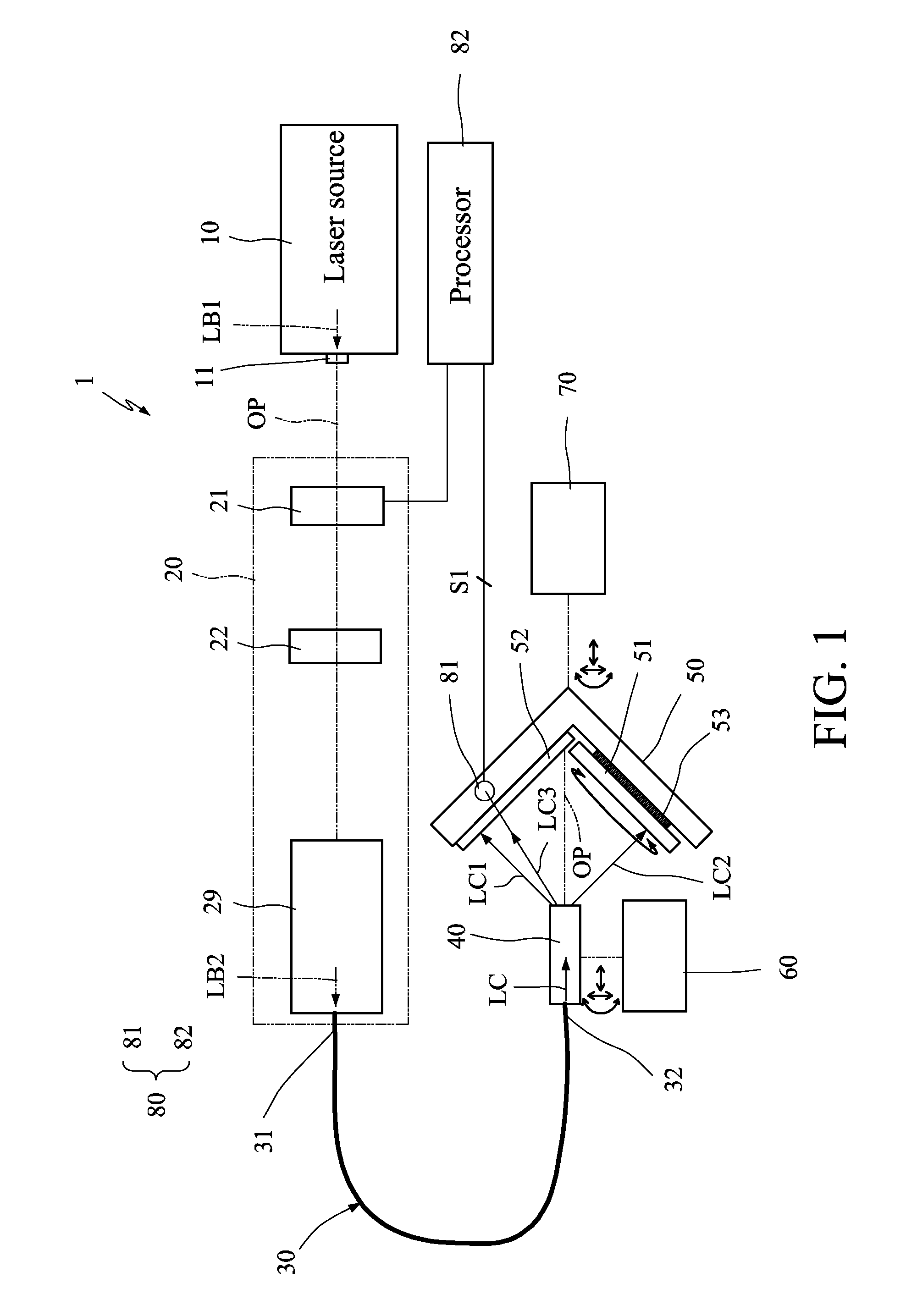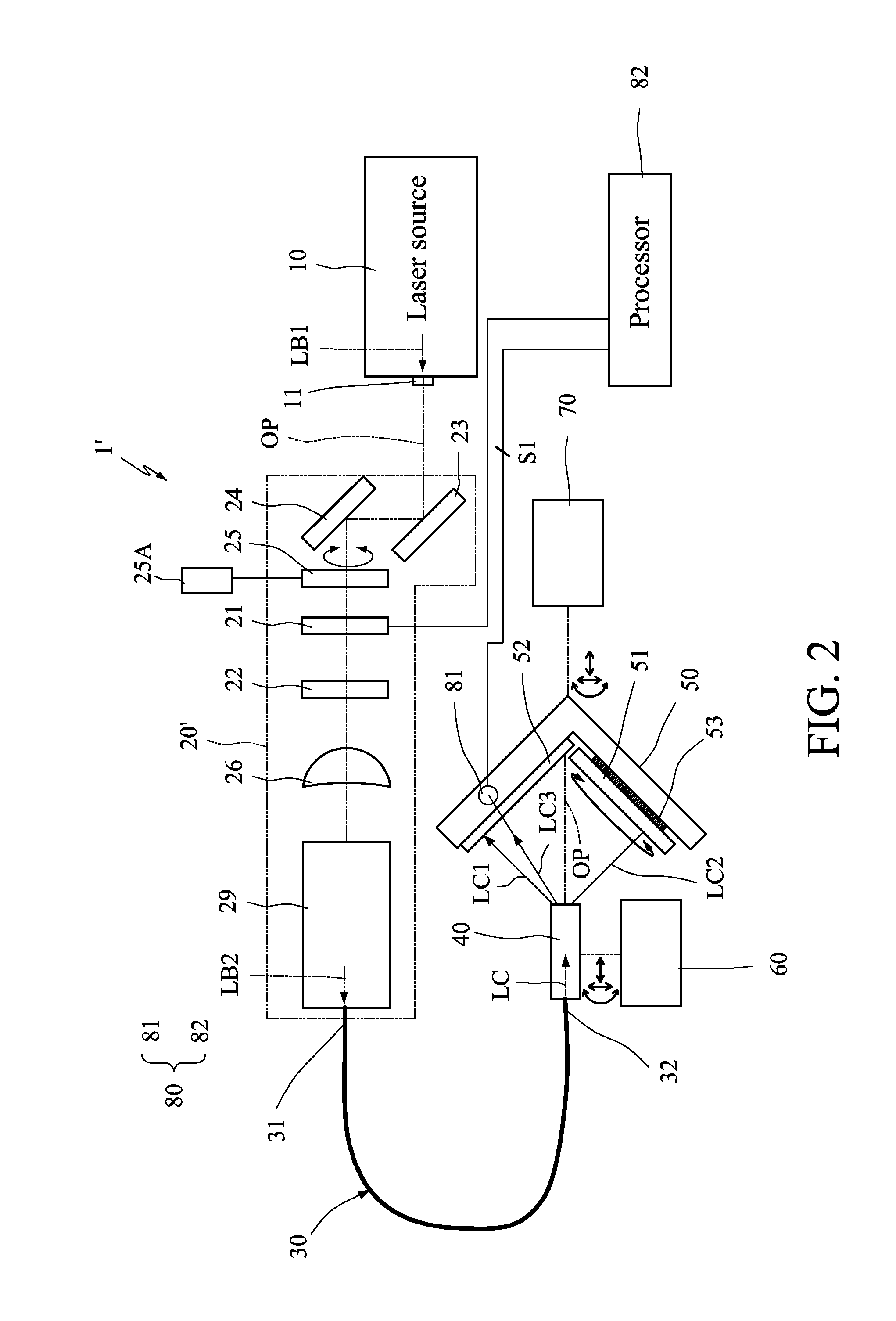Laser Interference Lithography Apparatus Using Fiber as Spatial Filter and Beam Expander
a lithography apparatus and fiber technology, applied in the field of laser interference lithography (lil) apparatus, can solve the problems of loss of contrast ratio or pattern shape, large depth of focus, and significant decrease of the influence of the environment on the exposur
- Summary
- Abstract
- Description
- Claims
- Application Information
AI Technical Summary
Benefits of technology
Problems solved by technology
Method used
Image
Examples
Embodiment Construction
[0022]The present invention will be apparent from the following detailed description, which proceeds with reference to the accompanying drawings, wherein the same references relate to the same elements.
[0023]Referring to FIG. 1, a laser interference lithography (LIL) apparatus 1 of this embodiment includes a laser source 10, an optics assembly 20, a fiber assembly 30, a holder 40 and an exposure stage 50. It is to be noted that the relative position relationships between the elements in FIG. 1 are only for the illustrative purpose only but do not intend to restrict the scope of the invention.
[0024]The laser source 10 provides a first laser beam LB1. In one embodiment, a helium (He) cadmium (Cd) laser operating at 325 nm is selected to serve as the ultraviolet (UV) light source. Because the He Cd laser operates with the relatively low power plasma, the thermal Doppler broadening of the laser is naturally relatively low (about 1 GHz). For LIL of the sample with the dimension of severa...
PUM
| Property | Measurement | Unit |
|---|---|---|
| wavelength | aaaaa | aaaaa |
| diameter | aaaaa | aaaaa |
| operating wavelength | aaaaa | aaaaa |
Abstract
Description
Claims
Application Information
 Login to View More
Login to View More - R&D
- Intellectual Property
- Life Sciences
- Materials
- Tech Scout
- Unparalleled Data Quality
- Higher Quality Content
- 60% Fewer Hallucinations
Browse by: Latest US Patents, China's latest patents, Technical Efficacy Thesaurus, Application Domain, Technology Topic, Popular Technical Reports.
© 2025 PatSnap. All rights reserved.Legal|Privacy policy|Modern Slavery Act Transparency Statement|Sitemap|About US| Contact US: help@patsnap.com



